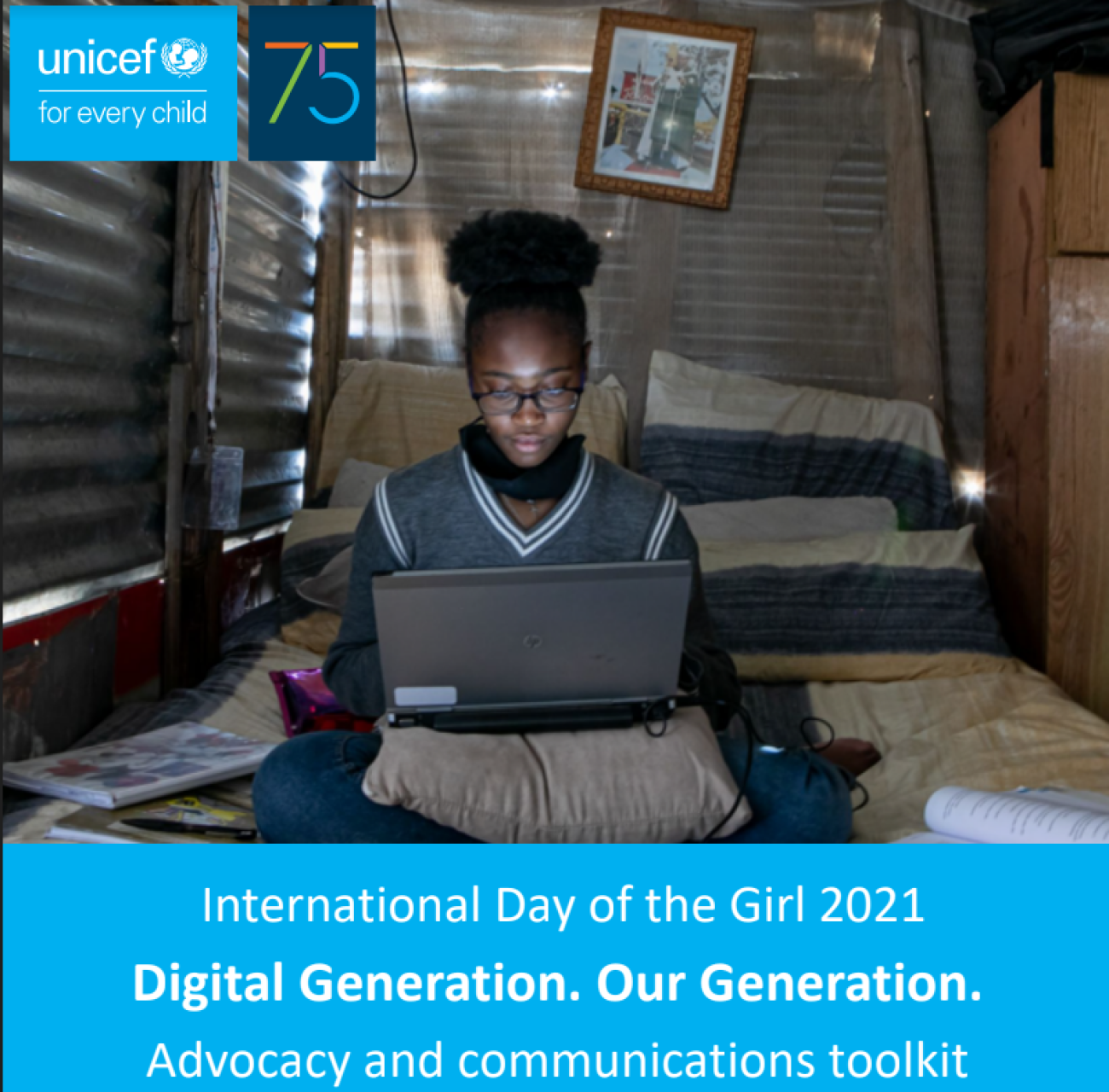UNICEF launches Advocacy and Communications Toolkit to drive action and accountability for and with girls to achieve a bold vision of bridging the digital gender divide.

A toolkit to drive girls and young women want to access and achieve equity in education, learning, a transition to employment, and leaders in the digital world.
Join UNICEF on International Day of the Girl 2021 in using the Generation Equality Forum platform to advocate for public and private stakeholders to join in collective action to drive the change girls and young women want to help them access and achieve equity in education, learning, a transition to employment, and as leaders in an increasingly digital world.
In 2021, the Generation Equality Forum (GEF) launched five-year commitments for bolder solutions to gender inequality – just as the world entered the second year of the COVID-19 pandemic.
While the pandemic has accelerated digital platforms for learning, earning and connecting, some 2.2 billion people below the age of 25 still do not have internet access at home. Girls are more likely than boys to be cut off. The gender digital divide in connectivity, devices and use, skills and jobs is real. It is an inequity and exclusion gap across geographies and generations that is our challenge to address if the digital revolution is to be for all, with all, by all. We’re pleased to share this advocacy and communications toolkit with useful resources for partners wishing to seize the momentum of GEF commitments made and to drive action and accountability for and with girls to achieve a bold vision of bridging the digital gender divide. In this toolkit you will find guidelines, briefs, key advocacy messages and asks under the International Day of the Girl 2021 theme Digital Generation. Our Generation. You can use these assets to raise up girls’ voices and speak up for every girls’ right to join the digital generation and live their full potential.
UNICEF Executive Director Henrietta Fore lists bridging the digital divide - along all its economic and equity fault lines - as one of five opportunities for children we must seize now to help bring quality education for all and create a better world for children post- COVID. Let’s continue to leverage the potential of digital learning to be the great equaliser in education, including by closing the gender gaps in digital skills and safe connectivity for girls.
Girls know their digital realities and the solutions they need to excel on their diverse pathways as technologists for freedom of expression, joy, and boundless potential. Let’s amplify the diversity of these tech trailblazers while simultaneously widening the pathways so that every girl, this generation of girls – regardless of race, gender, language, ability, economic status and geographic origin – lives their full potential. Gender equity in digital literacy is also a driver of economic growth, a competitive business, and national advantage. Yet currently:
- The global internet user gender gap is growing, from 11 per cent in 2013 to 17 per cent in 2019, and widest in the world’s least developed countries at 43 per cent.
- 2.2 billion people below the age of 25 do not have internet access at home, with girls more likely to be cut off.
- Globally, the percentage of females among Science Technology Engineering and Mathematics (STEM) graduates is below 15 percent in over two-thirds of countries.
- And in middle and higher-income countries, only 14 per cent of girls who were top performers in science or mathematics expected to work in science and engineering compared to 26 per cent of top performing boys.
- Only 22 per cent of Artificial Intelligence (AI) professionals globally are women, a massive gender gap in who is currently at the heart of designing the algorithms that will impact all of our lives.
SEE Toolkit HERE: UNICEF - Digital Generation - Advocacy and Communications Toolkit









